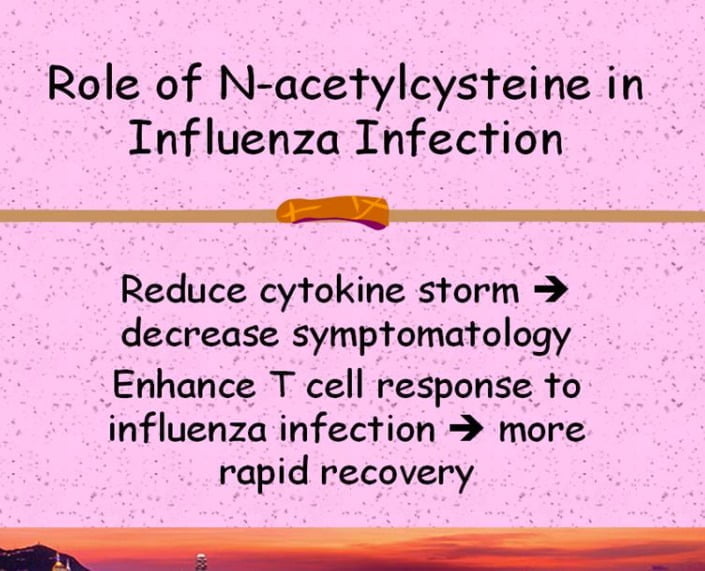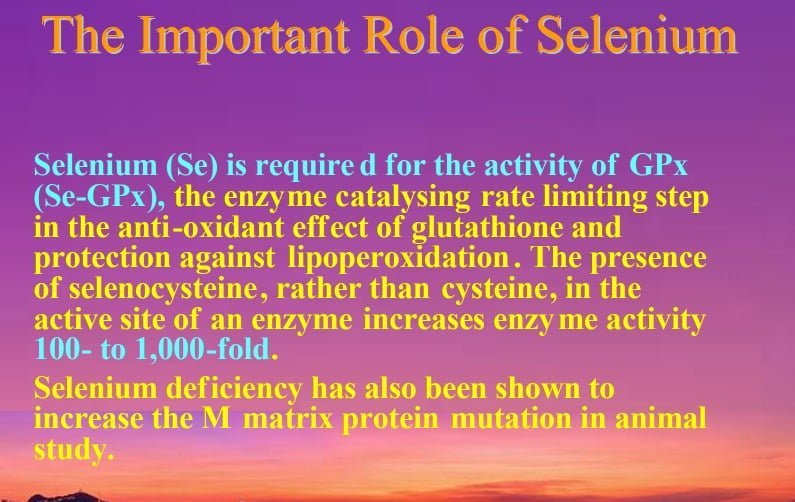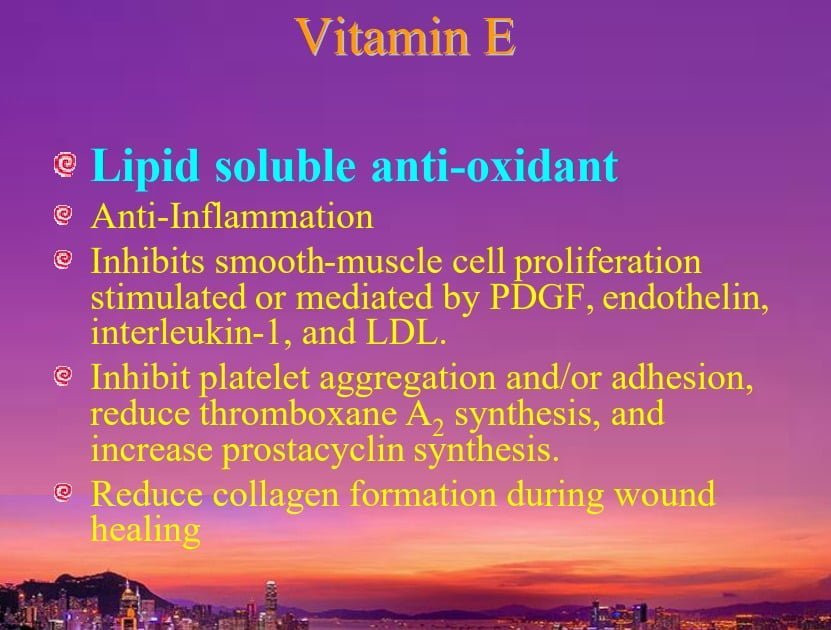Below are a number of slides from a presentation, High Dose N-Acetylcysteine Anti-oxidant Therapy – A Novel Approach For the Treatment of Novel H1N1 Pneumonia, given by Dr. Lai Kang Yiu, Consultant Intensive Care Unit Queen Elizabeth Hospital. This presentation is completely relevant to what we are experiencing today with COVID-19 Disclaimer: This post is for educational purposes only and is not a medical recommendation.
The NAC dose was 100mg’s /KG body weight in an IV. Oral administration can be used as well. Example: I’m 165lbs / 2.2 = 75 = 7500mg’s or 7.5gr. This dose was given with an antioxidant blend that included vitamins A, C, D, E, B-complex, zinc, selenium, copper, manganese and, lutein/zeaxanthin.
Points 1 & 4 relative for this post. 1. Continue the NAC and antioxidant protocol until the virus is completely gone, as well as any additional bacterial or viral co-infections (point #2). This may be a total of 21-30 days of continued therapy.
Inflammation caused by the virus, obesity, diabetes, co-infections, etc… can cause a rise in phase one proteins such as C-reactive protein, ESR, ferritin, and fibrinogen. Elevated fibrinogen can increase one’s risk of developing deep-vein thrombosis and pulmonary embolism. Ventilated patients with the H1N1 virus as well as COVID-19 (coronavirus-7), and elevated fibrinogen (over 500) are at an increased risk of organ failure and death. 
Based on all evidence, NAC may confer the same protection and benefits for those with COVID-19 (coronavirus-7).
Continue the NAC and antioxidant protocol until the virus is completely gone, as well as any additional bacterial or viral co-infections (point #2). This may be a total of 21-30 days of continued therapy.
Important note: NAC reduced the levels of the inflammatory chemicals which decreases the duration and severity of the illness.
Excerpt from the above journal article. “Thus, it appears that a deficiency in selenium (Se) leads to a more proinflammatory immune response that results in increased pathology in the lungs of the Se-deficient mice. Is the increase in pathology due to a change in the viral genome as we found for coxsackievirus? To answer this question, we passed influenza virus isolated from Se-deficient mice back into Se-adequate mice. These mice developed much more severe pneumonitis as compared with Se-adequate mice infected with virus isolated from Se-adequate mice.
“These results plus our earlier work with coxsackievirus suggest that oxidative stress in a host leads to genome changes of an RNA virus, and that these changes can be associated with increased virulence of the virus.”
Basically, mice with low selenium status who were exposed to the virus developed a more virulent strain and had severe pathology. The mice with a good level of selenium developed a less virulent strain and had a more mild response to the virus.
Basically, mice with low selenium status who were exposed to the virus developed a more virulent strain and had severe pathology. The mice with a good level of selenium developed a less virulent strain and had a more mild response to the virus. When the virus from the selenium-deficient mice was given to selenium adequate mice the developed the virulent strain. The observed conclusion is that a population low in selenium may breed a more virulent strain and fare a more bleak prognosis. It would be interesting to find out if northern Italy (Milan) is more selenium-deficient as a population than Rome, and if Rome is more deficient than Sicily?
The dose used in this presentation was 40mcg’s. I take 50mcg’s day as a maintenance dose and I would increase it to 100mcg’s 2x/day if I were challenged with a viral infection like influenza A or COVID-19.
NF-kappa B (NF-kB) has been well recognized as a pivotal regulator of inflammation in many diseases. The oxidized form of vitamin C (ascorbic acid) is dehydroascorbic acid (DHA). DHA inhibits NF-kB activation.
The cytokine interleukin-1β (IL-1β) is a key mediator of the inflammatory response. Essential for the host-response and resistance to pathogens, it also exacerbates damage during chronic disease and acute tissue injury. Although low levels of α-tocopherol (AT) are associated with increased risk for cardiovascular disease, increased intakes appear to be protective.123456 In addition to d-alpha-tocopherol (AT) decreasing the oxidative susceptibility of LDL,789 it could have effects on other crucial cells in atherogenesis, such as monocytes, that could prove beneficial. We previously showed that in vivo supplementation with AT significantly decreases monocyte superoxide anion release, lipid oxidation, interleukin-1β (IL-1β) release, and adhesion to endothelial cells.10 400mg’s of d-alpha-tocopherol w/mixed tocopherols and tocotrienols.
Zinc gluconate @ 15 mg’s every 2 hours during active symptoms has been shown to reduce inflammatory cytokines, improves innate immunity, and may reduce viral replication.
Obesity increases the risk of increased symptoms and severity of the H1N1 virus, as well as COVID-19 (coronavirus). Obesity also increases the risk of developing deep vein thrombosis and pulmonary embolism. See the slide below.
Inflammation caused by the virus, obesity, diabetes, co-infections, etc… can cause a rise in phase one proteins such as C-reactive protein, ESR, ferritin, and fibrinogen. Elevated fibrinogen can increase one’s risk of developing deep-vein thrombosis and pulmonary embolism. Ventilated patients with the H1N1 virus as well as COVID-19 (coronavirus-7), and elevated fibrinogen (over 500) are at an increased risk of organ failure and death.
NAC and vitamin E may help to lessen the risk of DVT and pulmonary embolism.
Other strategies and data are contained in the youtube video below. If you need help navigating this issue, I’m here for you. We can schedule a Zoom video consultation to go over protocols or just have a Q & A. 714-639-4360. https://advancedhealing.com
Other posts that you might find relevant to COVID-19 / SARS-CoV-2 / Coronavirus Disease 2019.
https://advancedhealing.com/neuropsin-a-photoreceptor-protein-can-control-circadian-rhythm-independent-from-the-brain/



















What are you wearing? Cold vest?
Ian,
As a 35 year practicing Stoic, I choose to not let things like that affect me. Thank you for your support.
Yes, it’s a cold thermogenesis vest. I ware it for about an hour 4-5 days/week. The more brown fat, the more mitochondria, the more horsepower the body has. https://www.coolfatburner.com